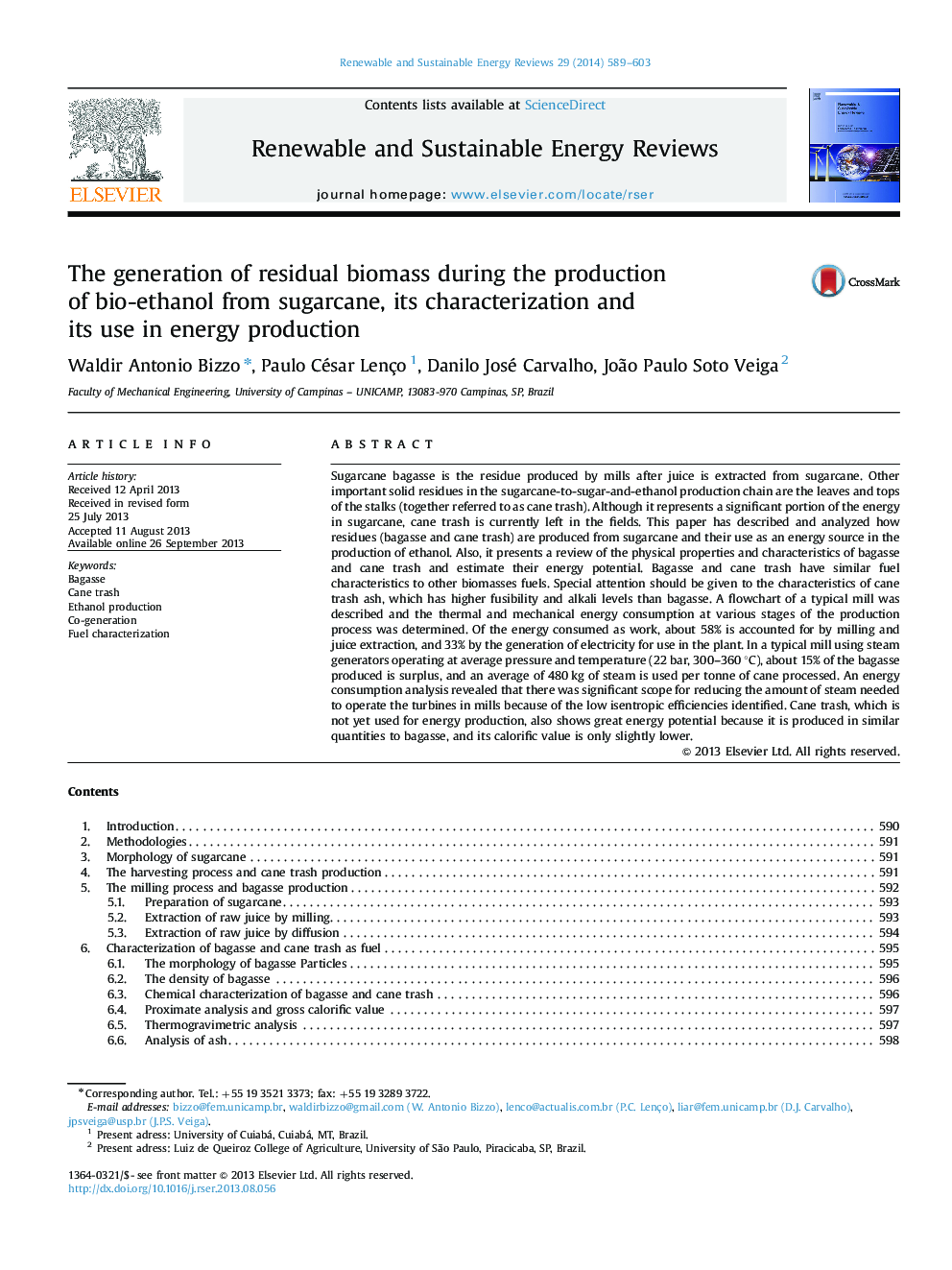| Article ID | Journal | Published Year | Pages | File Type |
|---|---|---|---|---|
| 8121245 | Renewable and Sustainable Energy Reviews | 2014 | 15 Pages |
Abstract
Sugarcane bagasse is the residue produced by mills after juice is extracted from sugarcane. Other important solid residues in the sugarcane-to-sugar-and-ethanol production chain are the leaves and tops of the stalks (together referred to as cane trash). Although it represents a significant portion of the energy in sugarcane, cane trash is currently left in the fields. This paper has described and analyzed how residues (bagasse and cane trash) are produced from sugarcane and their use as an energy source in the production of ethanol. Also, it presents a review of the physical properties and characteristics of bagasse and cane trash and estimate their energy potential. Bagasse and cane trash have similar fuel characteristics to other biomasses fuels. Special attention should be given to the characteristics of cane trash ash, which has higher fusibility and alkali levels than bagasse. A flowchart of a typical mill was described and the thermal and mechanical energy consumption at various stages of the production process was determined. Of the energy consumed as work, about 58% is accounted for by milling and juice extraction, and 33% by the generation of electricity for use in the plant. In a typical mill using steam generators operating at average pressure and temperature (22 bar, 300-360 °C), about 15% of the bagasse produced is surplus, and an average of 480 kg of steam is used per tonne of cane processed. An energy consumption analysis revealed that there was significant scope for reducing the amount of steam needed to operate the turbines in mills because of the low isentropic efficiencies identified. Cane trash, which is not yet used for energy production, also shows great energy potential because it is produced in similar quantities to bagasse, and its calorific value is only slightly lower.
Related Topics
Physical Sciences and Engineering
Energy
Renewable Energy, Sustainability and the Environment
Authors
Waldir Antonio Bizzo, Paulo César Lenço, Danilo José Carvalho, João Paulo Soto Veiga,
